Tim Gunn on Post-Pandemic Fashion, Authenticity, and the Mystery of Leggings
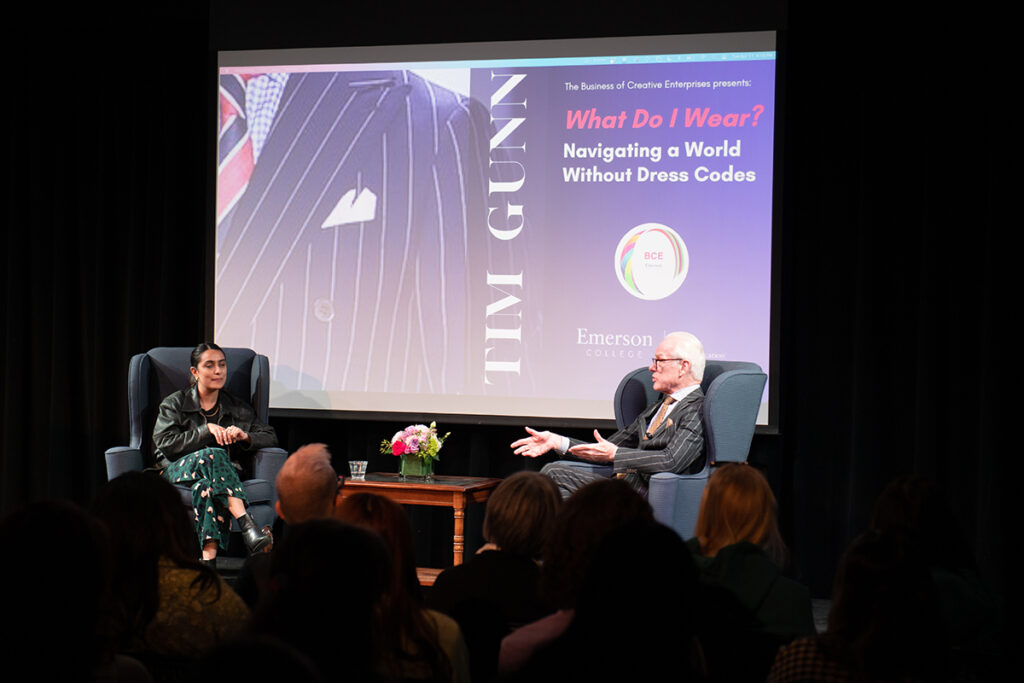
When was the last time you wore a suit and tie? Or heels? To a cousin’s wedding? To a job interview? Was it 2019?
When the pandemic consigned us all to our homes, “hard pants” suddenly became optional. Three years later, as many of us head back into offices and restaurants and social gatherings, there’s a sense that that the rules for how to dress have loosened or changed. Or maybe they’ve been abandoned altogether. And for Emerson students who perhaps are about to enter professional environments for the first time, it can be even more confusing.
The Business of Creative Enterprises (BCE) Department enlisted Tim Gunn, fashion icon, TV mentor, and co-instructor (with Sharon Topper) of this summer’s Innovation for Impact course, to talk us through how we can approach clothing and fashion in this new age. Moderated by Boston Globe business reporter Diti Kohli ’21, and kicked off with a student fashion show, “What Do I Wear?: Navigating a World Without Dress Codes,” was held April 11 in the newly christened Judee Wales Watson Theater.
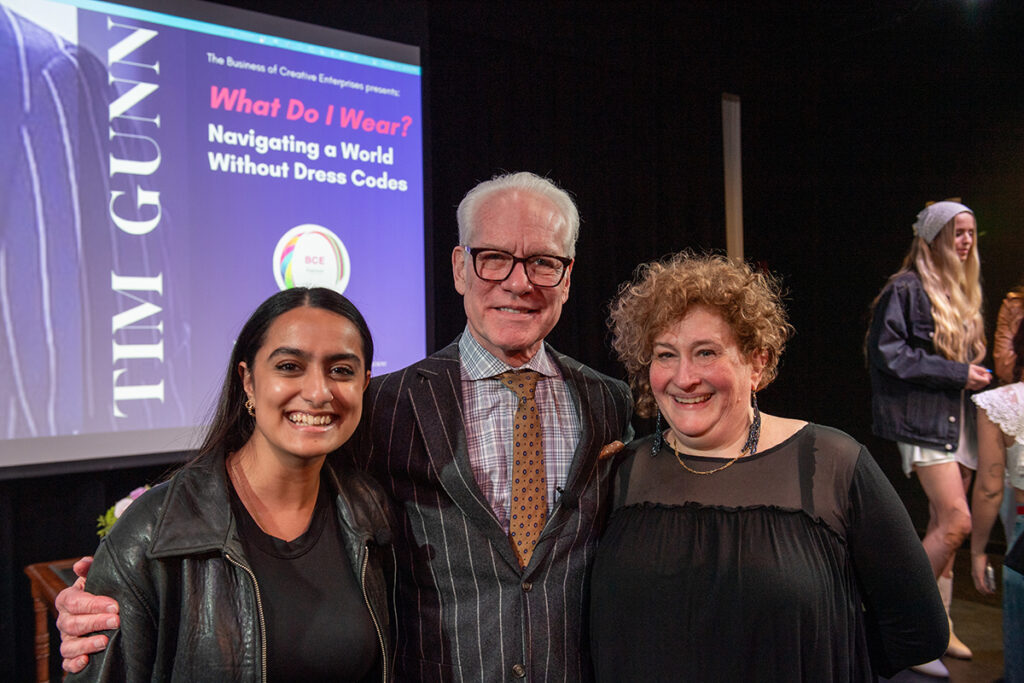
“The reason that we ponder [what we should wear] is the same reason we think carefully about the email we are about to write, the way we draft our resume or our website, or when we consider the responses to the interview questions that will hopefully get us the job,” said BCE Director Brenna McCormick. “Clothing is a form of communication.”
Here’s what Tim Gunn said:
Wear what you like, but own what you wear.
I don’t care what you wear, as long as you accept responsibility for wearing it. That’s very important. …Clothing is a form of semiotics, it sends a message about how the world perceives us. It should send a message about how we want the world to perceive us. That’s a very tall order.
…
Who are you? How do you want to project yourself? And be sincere and upfront about it. What really galls me, and it happens with some frequency, is an individual will say, ‘I don’t care how I dress, it doesn’t matter. If it bothers you, or if you care about it, that’s your problem, not mine.’ Well, it’s actually yours. You need to own responsibility for it. It’s very, very important.
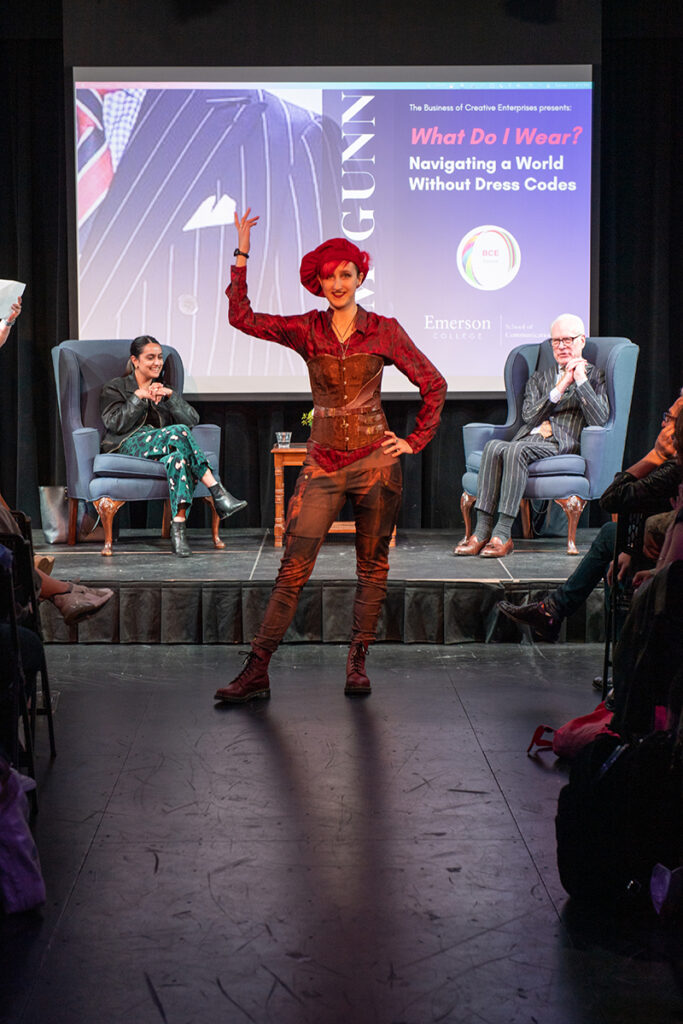
New job? Read the room
Well, once you’re in a workplace … you need to read the fashion signals around you, and ask yourself how they apply to you, or don’t. And, how you can assimilate into that fashion culture. But, when you first arrive – and there may be a lot of controversy about this – I really believe you dress up. People often say, ‘I don’t want to be the most dressed up person in the room.’ I do! Then you don’t have to be embarrassed by how you’re presenting yourself.
The big three
I really subscribe to three principles in dressing. The principles are silhouette, proportion, and fit. It’s not particular items that you wear, it’s about how they fit you, how they correspond to your proportions.
Fit: You don’t want things hugging you like a wetsuit, nor do you want them cascading away from you. … [W]hen people say, ‘Well, I like to wear oversized clothes because it conceals the things that I don’t like about myself, physically,’ my response is that the more volume your clothes have, the more volume you appear to have.
Talking about proportion … I subscribe to the following: We should divide ourselves into a series of thirds, from our shoulders to our toes. … Two-thirds on top, one third on the bottom.
For instance, a dress is two-thirds on top, the one third on the bottom is the leg. For men, it would be a shirt on top, pants on the bottom. So here’s the thing men won’t like: What is deadly, in my view, in terms of proportion, is cutting yourself in half. It’s desperately unflattering. So when the shirt tail is out, men are cutting themselves in half. It’s just not the neatest of looks. I just believe people look better when their shirt is tucked in.
Ask a question…
I’ve learned this the hard way. If we ask ourselves, can I wear this? Or, should I be wearing this? We’ve answered the question.

A word about leggings…
I have this refrain about leggings. How did it happen? How did it happen that they became a pant? They’re a form of undergarment.
….
But if you’re active on a set, I have no objection to leggings. When I work out, I’m wearing, well sort of track pants and a T-shirt and whatever outerwear I need.
Budgets can be your friend
I’m very respectful of budgets. I believe that we are much more thoughtful in our fashion decision-making when we’re shopping … on a budget, especially a tight budget. I think the biggest fashion mistakes are made by people with deep pockets who just buy willy-nilly and then throw it in their closet and decide later when they’re going to wear it, and with what.
Be yourself
I subscribe to authenticity. If it’s really who you are, people will respect that. But if you’re playing dress-up doll, or you’re wearing a costume that you don’t subscribe to, that will also be read us as insincere and inauthentic.
[E]mbrace [trends] through your own lens and your own fashion sensibility and ask yourself, ‘How can this work for me?’ as opposed to just imitating someone.
The one piece everyone should own
I think every [person] benefits from having a tailored jacket in their wardrobe, because it’s the easiest way to dress up something that is way more casual, [and] sends a very different message. But it also has to fit in with who you are. It doesn’t mean a Brooks Brothers blazer, it could be really anything that fits in.
The benefit of a tailored jacket [is] that it sends a very profound message about how you want to present yourself and how you take yourself seriously. At the same time, you can rock these other pieces in that particular look.
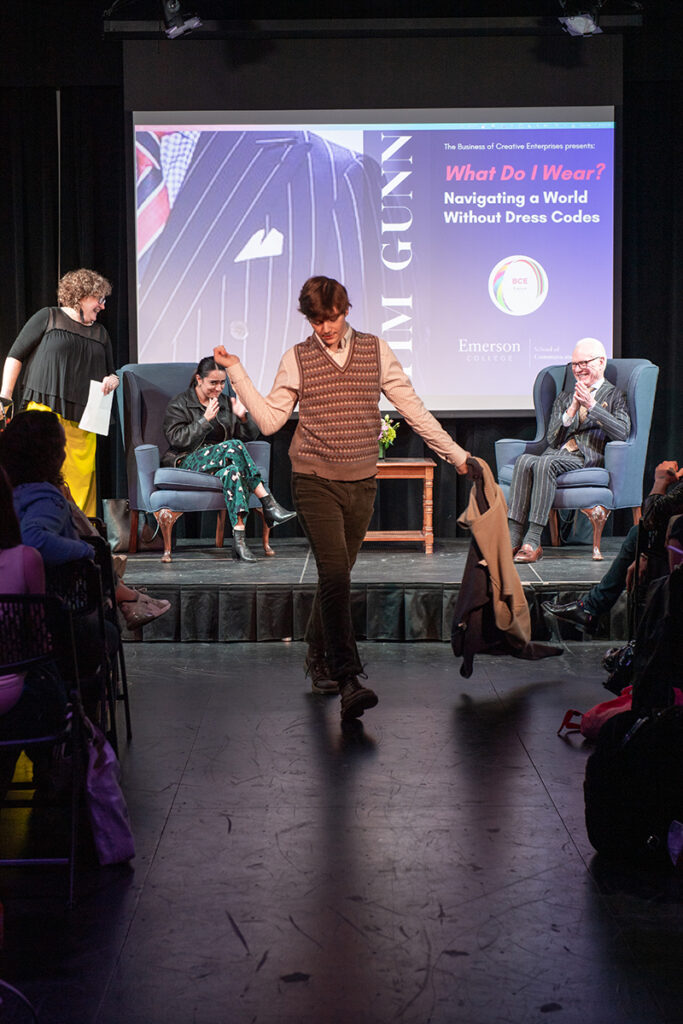
Don’t be afraid to bend gender
I love gender fluid clothing. I have items myself that I wear and I feel extremely confident in them, despite the fact that I’m going to be 70 this summer, so I don’t think it’s exclusive to young people by any means. I also find that it sort of unshackles the wardrobe, whether you identify as male, or female, or he, or she, or they. It’s extremely liberating in design.
Down with codes
Do we need [dress codes]? I don’t think we do. Is there a hair code? Is there a makeup code? I think the whole idea of a dress code is anachronism, and belongs in the past. I truly do. Though, I will repeat what I said earlier about when you’re in a workplace, look at how people are dressed around you, people who have been there for a while. Take some notes and possibly some cues about how you can assimilate into that.
Confidence game
Everyone in this room should attain, if you don’t have it already, a level of confidence that your clothing underscores, that your clothing supports, so that you’re not in conflict with what that is. I wouldn’t pretend to say what that means [to you] at all.
History lesson
We should all look at the ‘60s and study it, because there was no more revolutionary decade in the history of fashion. It was phenomenal. You usher it in with Mad Men conservatism and you usher it out with a clear vinyl dress and hippies. I mean, my god, the mini skirt! It was a revolution. Fascinating.
When not to dress your age
No one should be matronly. Including matrons.
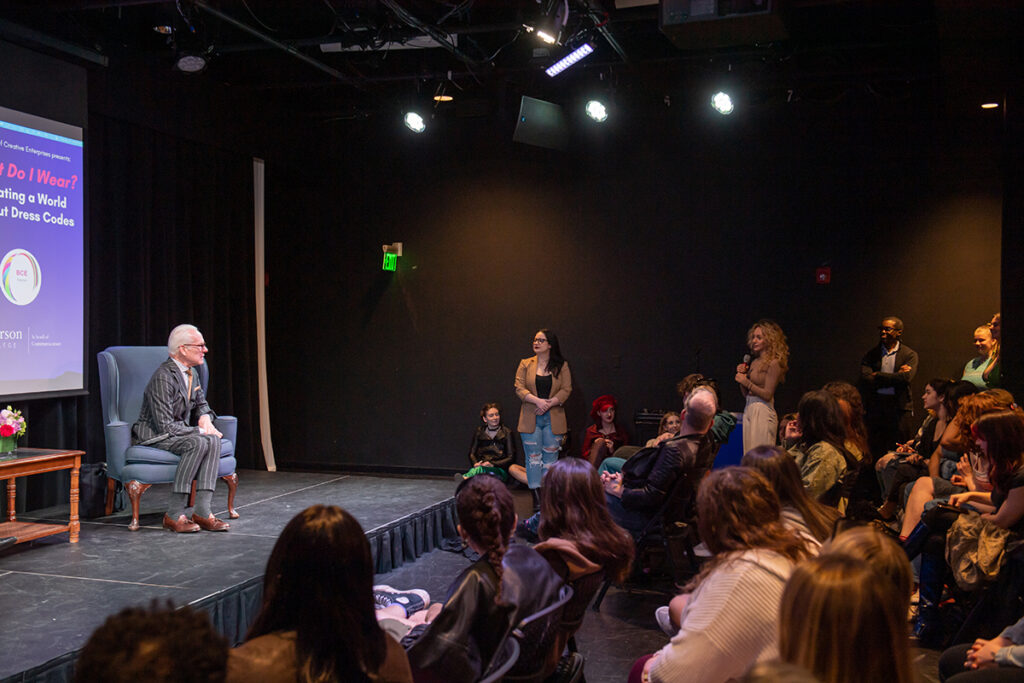
Sometimes it takes a little push
I had a small part in a movie called The Smurfs. The costume designer, Rita Ryack, said to me … before filming, ‘Oh, you’re Tim Gunn, I wouldn’t tell you how to dress.’
So, I brought my clothes and we shot that day, and she called me at home that night and said, ‘I just looked the rushes, your clothes aren’t good enough.’ And I was horrified and embarrassed. And she said, ‘I’m going shopping in the morning. Meet me at this tailor on 50th Street at one o’clock.’ So I did, and I’m looking at these items, and I’m looking at the prices, and I’m saying, ‘I’m not putting these on.’ Furthermore, who are these for? The windowpane suits and crazy pattern mixing and the pocket squares. And I just said, ‘I’m not this person.’ [She said] ‘Put it on.’ I mean, she really read me the riot act.
And I have to say for me – because it was really, really, really hard and it was even harder when I went on camera with these clothes – something happened to me. It was like the long-distance runner hitting the wall. Suddenly I thought, OK, I get it now. I like this. I feel comfortable because I felt confidence. But it was an adjustment.
Categories